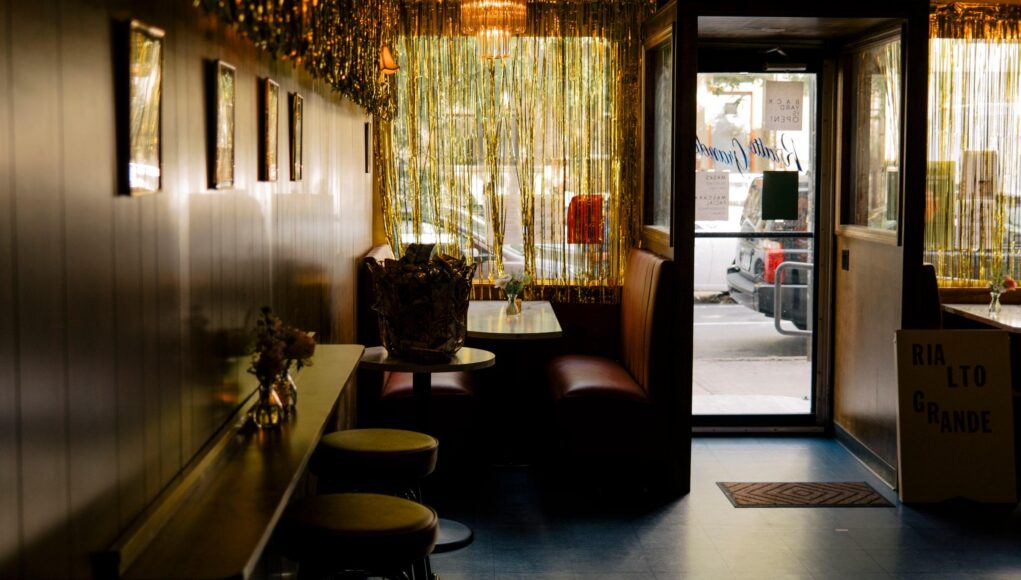Last August, I began hosting a weekly Instagram talk show for something habitual to do in isolation. Several graceless attempts at using a green screen passed before I went to the party store and bought $20 worth of silver tinsel to line my living room. As performers took to Twitch streams and Instagram Lives during the pandemic, I noticed more metallic curtains appearing as defiant good-time backdrops against pale interior walls, offering a small moment of glamour in an otherwise unglamorous time.
James Veloria founder Brandon Giordano’s relationship with metallic tinsel curtains began with a dominatrix back in 2004. Upon moving to the Bay Area from Ohio, he lived with a friend’s mom, who separated her loft from her dungeon with Party City tinsel curtains. “I always thought about what was behind them,” he says. “There was this fantasy of going through the curtains and into this whole other world that we were definitely not allowed in.”
Ever since, Brandon’s apartments have featured a wall of metallic fringe—affordable glamour for around nine bucks a pop. The throwaway decoration has been popping up in retail, restaurants, and bars as our collective mood shifts from less to more. At James Veloria in New York, silver foil fringe curtains cover the wall dividing the store’s two rooms. Brandon and his husband—cofounder Collin Weber—liked that the fringe made the shop homier, almost like walking into a family member’s graduation party or a friend’s New Year’s Eve celebration.
Confetti System, a collaboration between friends Julie Ho and Nicholas Andersen, started amid another global crisis. The originators of party-decor-as-art, they started making celebratory pieces such as tassel garlands and piñatas around 2008 after the economic crash. Longtime friends who met in college, the duo came together with a shared experience of being Asian-American and having a similar memory bank of visual references from ceremonial spaces and clubs.
“[Julie] grew up going to raves in New York City in the ’90s, which I’m always in awe of, and I grew up in Hawaii around lots of flowers, lots of traditional craft, creating spaces out of things around you,” Nicholas explains. “Intentional ceremonial safe spaces, like, ‘I feel really good here, I feel like myself.’”
One of the tinsel curtain displays at the clothing store James Veloria in New York.
There’s a famous architecture book titled Learning From Las Vegas that deconstructs the appeal of casinos and nightclubs—any place meant for escapism. “The controlled sources of artificial and colored light within the dark enclosures expand and unify the space by obscuring its physical limits,” wrote architects Robert Venturi, Denise Scott Brown, and Steven Izenour. “You are no longer in the bounded piazza but in the twinkling lights of the city at night.” That’s the precise seduction of the metallic tinsel curtain: It conceals a room’s physical limits and refracts another possible dimension to the viewer.










